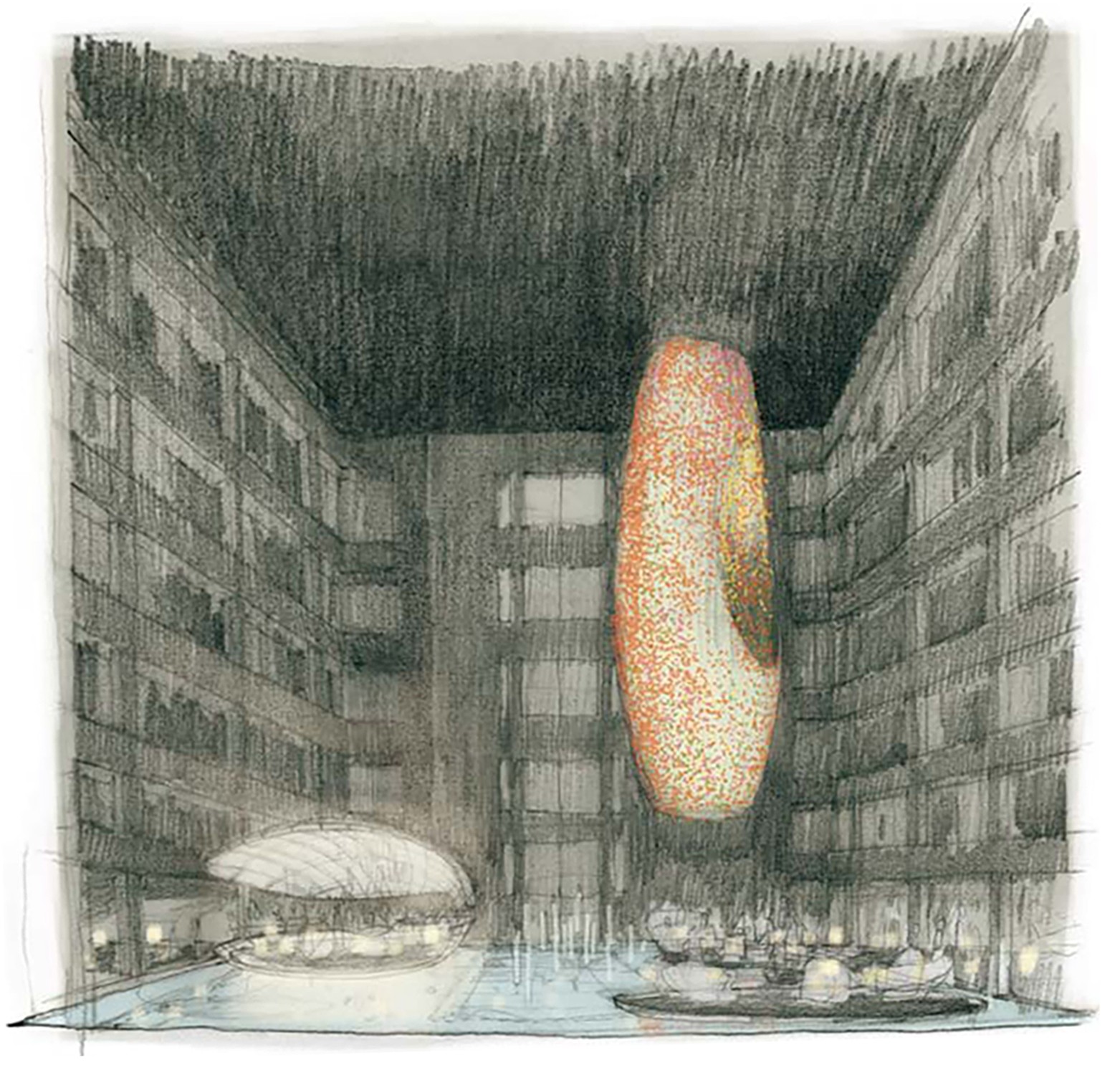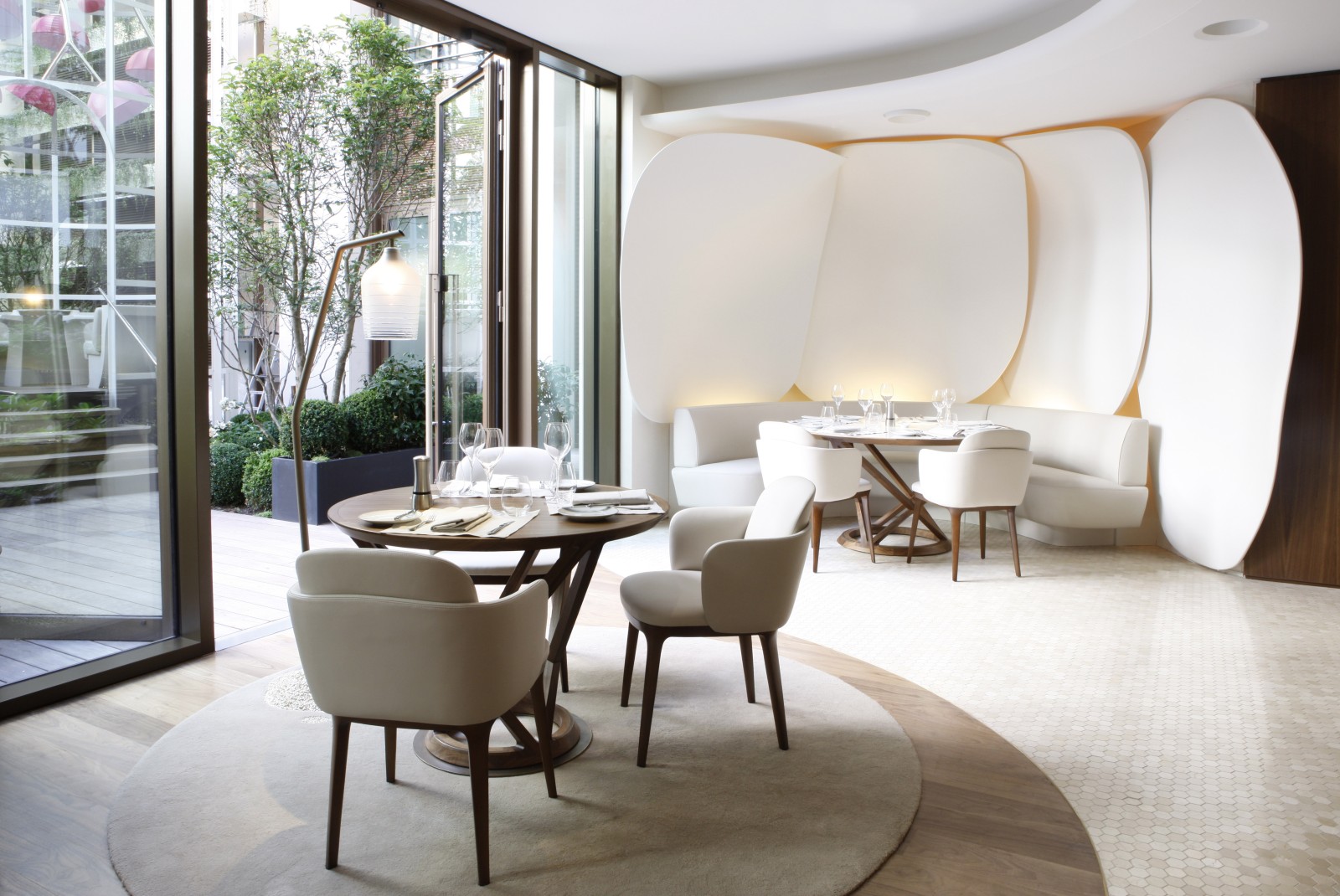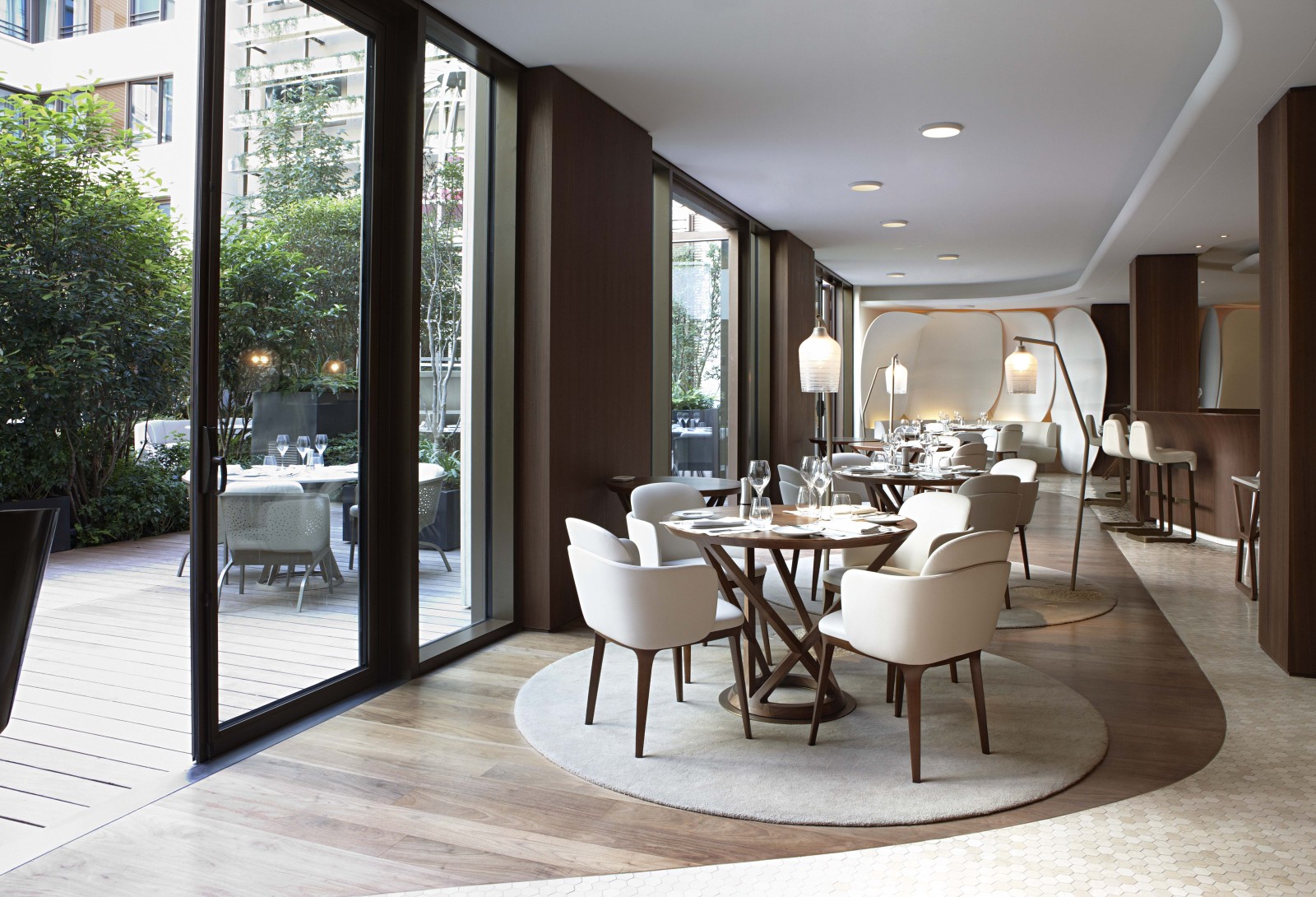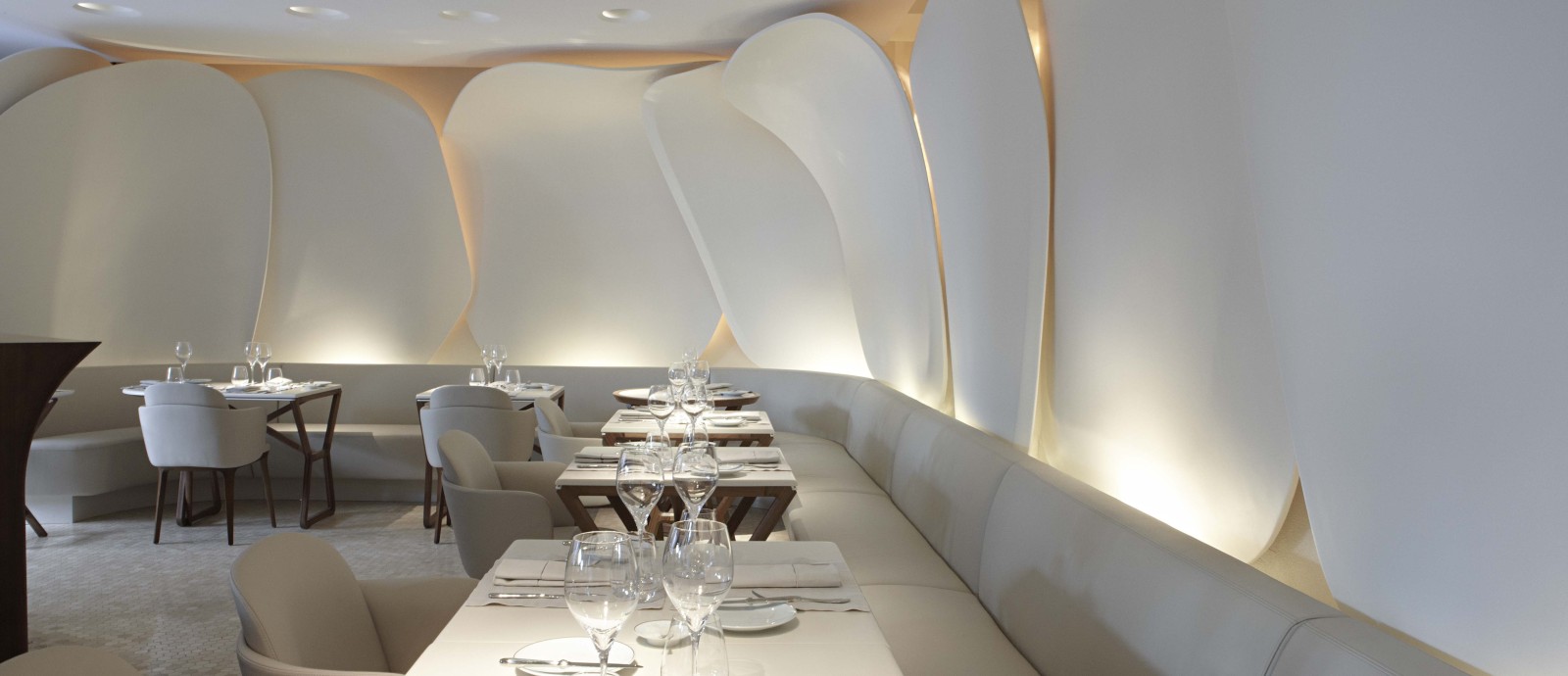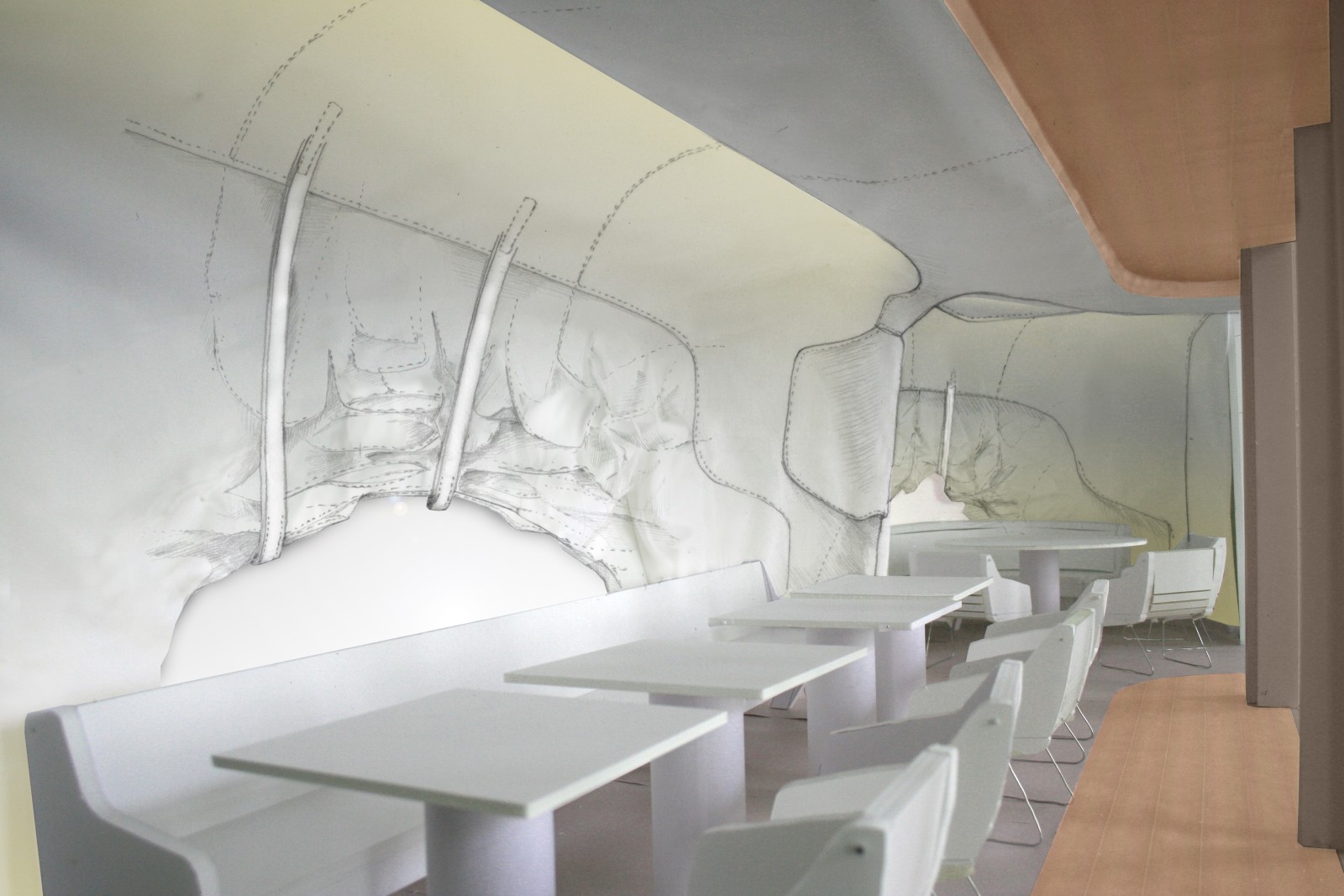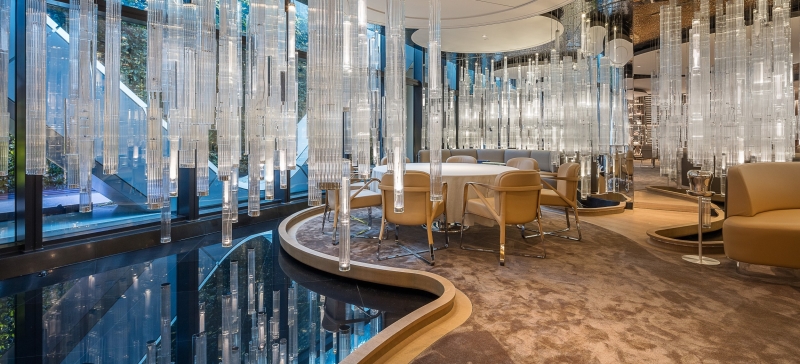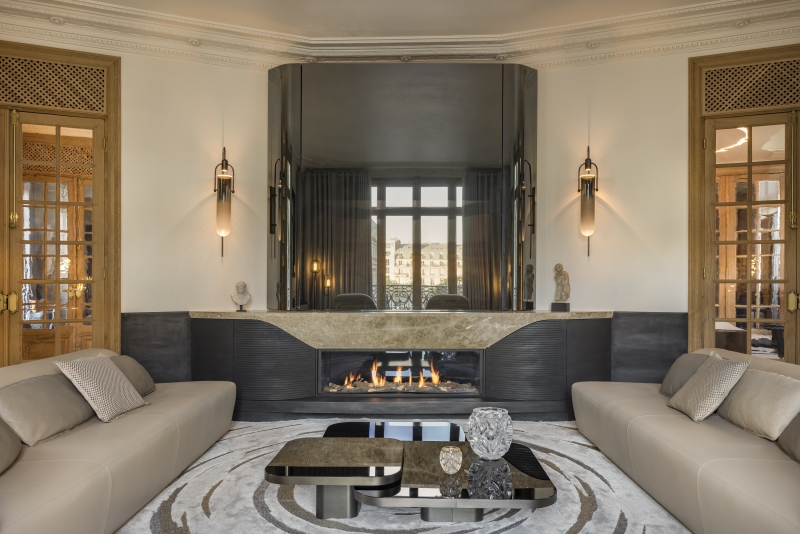The Mandarin Oriental, Paris is situated at 251 rue Saint-Honoré, right in the heart of Paris, a few steps from Place Vendôme and its prestigious jewelers. It is owned by the Société Foncière Lyonnaise. Jean-Michel Wilmotte was responsible for the renovation of what had previously been a block of office buildings, which he transformed into this highly contemporary hotel based around a large courtyard garden.
Our first emotion on entering this place was surprise because it is rare that the luxury of nature can be admired in the heart of a city. It felt enchanting. This sensation would be revisited in each zone entrusted to us in a new way. A specific choreography of emotions and experiences greets the visitors in each of the spaces.
Next to the garden, there is a restaurant open from morning to evening, which catches the daylight. Later it will be named Camélia. Opposite, the Bar 8 rests in its shade. Here nature becomes strange and sensual in contact with a flowing body of minerals. In a more remote place, around a small courtyard, we will create the restaurant for Thierry Marx. With its uncharacteristic volumes, it will become a space of experimentation around the use of fabric as a material of architecture. Le Sur Mesure.
Our first emotion on entering this place was surprise because it is rare that the luxury of nature can be admired in the heart of a city. It felt enchanting. This sensation would be revisited in each zone entrusted to us in a new way. A specific choreography of emotions and experiences greets the visitors in each of the spaces.
Next to the garden, there is a restaurant open from morning to evening, which catches the daylight. Later it will be named Camélia. Opposite, the Bar 8 rests in its shade. Here nature becomes strange and sensual in contact with a flowing body of minerals. In a more remote place, around a small courtyard, we will create the restaurant for Thierry Marx. With its uncharacteristic volumes, it will become a space of experimentation around the use of fabric as a material of architecture. Le Sur Mesure.

